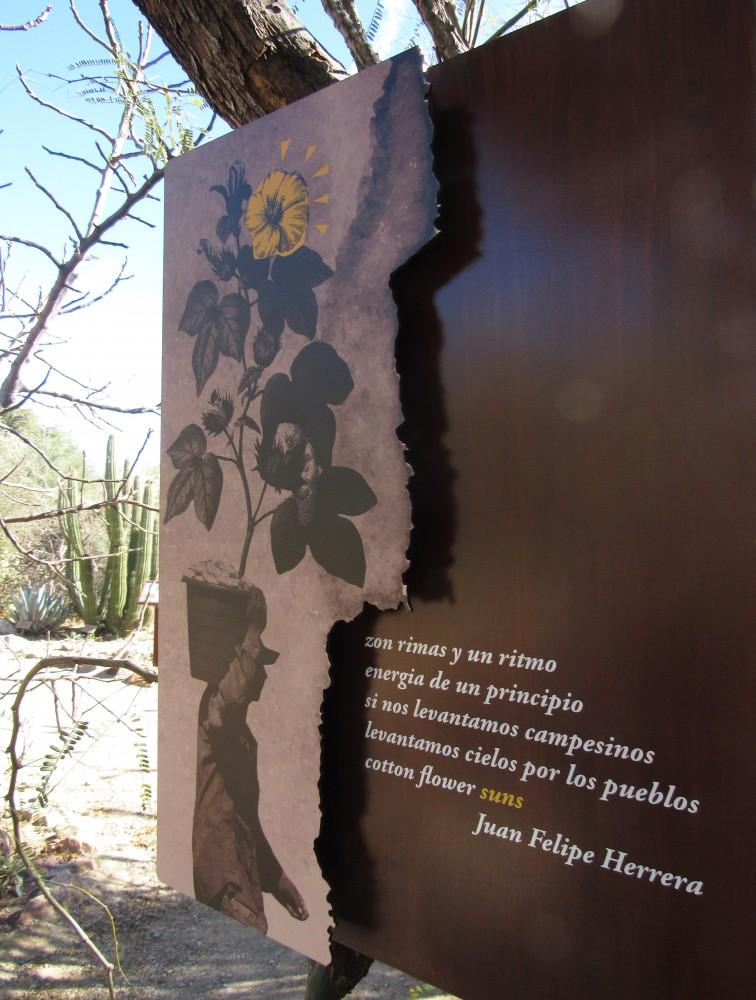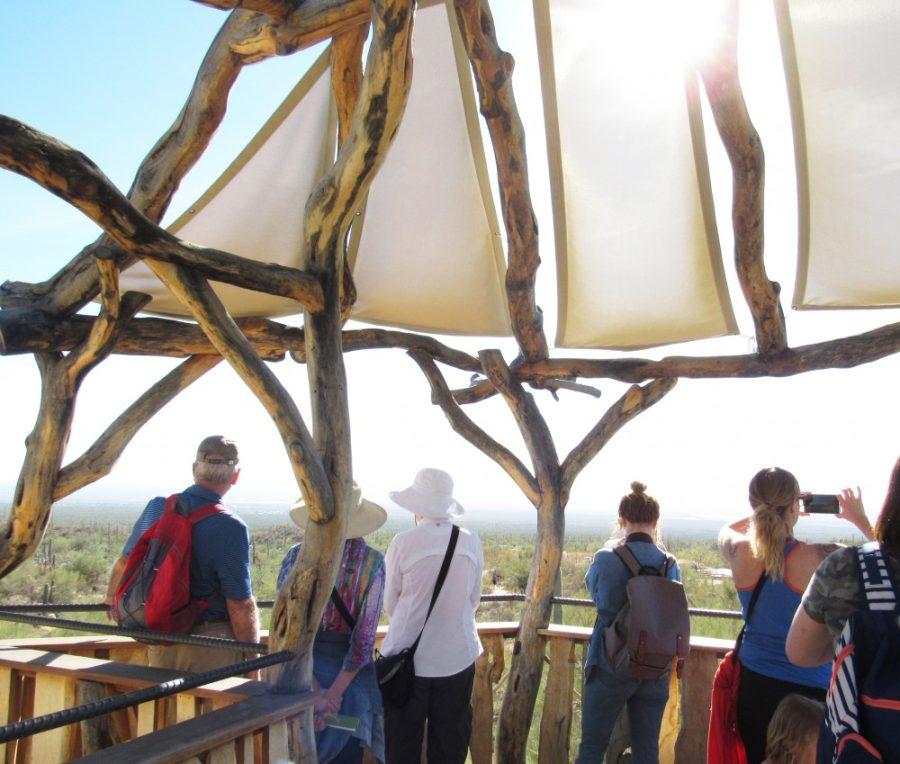The Arizona-Sonora Desert Museum collaborated with the University of Arizona Poetry Center to host the Woven Words poetry project Jan. 28. The project featured over 30 different poetry installations, most of which focused on environmental issues specific to the desert landscape and ecosystem.
Tyler Meier, executive director at the UA Poetry Center, said environmental preservation is something every individual should be mindful of because the landscape is the one thing every person has in common.
“Whatever future is possible, it’s one that we will have together,” Meier said. “We need to collectively think about what sorts of choices we can make that will take care of these things that we have in common, and the landscape is one of those things.”
RELATED: UA film production club aims for the stars
According to NASA Global Climate Change, the planet’s average surface temperature has risen about 2.0 degrees Fahrenheit (1.1 degrees Celsius) since the late 19th century, a change driven largely by increased carbon dioxide and other human-made emissions into the atmosphere.
Meier said poetry helps inspire individuals to be aware of their impact on the environment because it discusses environmental issues in a much more emotional and sentimental way than statistics and research.
“For instance, [with] climate change, the science is very clear and it’s really deep and compelling, but knowing it isn’t enough,” Meier said.
Meier hopes poetry can create a conversation about what individuals can do in their lives to change the way their behaviors and habits affect the environment.

“It’s a way of activating that knowledge for us and helping us think about what we know now from science in new and important ways,” Meier said.
The Arizona-Sonora Desert Museum is always seeking to inform and educate more individuals about the significance of environment preservation, which is why it is currently under construction to add more art buildings and classrooms.
“This place is a huge advocate for education, and I think that’s what attracts a lot of people,” said Alejandro Benitez Leon, an employee for the museum.
Craig Ivanyi, the executive director for the Arizona-Sonora Desert Museum, recognizes that individuals are drawn to the museum for a variety of reasons whether it be for the solitude of the labyrinth garden, to visit the zoos and aquariums or to educate themselves on natural history.
RELATED: ‘I, a Squealer’ gives the other side of the Pied Piper Murders of Tucson
Whatever the reason, Ivanyi looks for opportunities to inspire every individual who visits the museum to connect with nature and consider how their actions are affecting the environment.
“I look at all these different ways for bringing people out here because I never know what’s going to attract them or what’s going to connect with them,” Ivanyi said. “What we’re always looking to do is get [people] to walk away with a piece of [the museum] in their heart to where they actually feel something and want to do something about it.”
Ivanyi said he is excited for the collaboration between the museum and the UA Poetry Center and hopes the project will bring more awareness to both organizations.
“We have poetry and prose, and each one of those pieces may be the one thing somebody remembers when they go home,” Ivanyi said. “It’s informative, but it also connects with them in a way that I’m hoping is very meaningful.”
The project features poems from writers such as Byrd Baylor, Ofelia Zepeda, Eric Magrane, Alberto Alvaro Ríos and more. These poems can be seen on display in exhibits including the lizard enclosure, the hummingbird aviary, the Cottonwood Café and others.
Follow Daily Wildcat on Twitter









